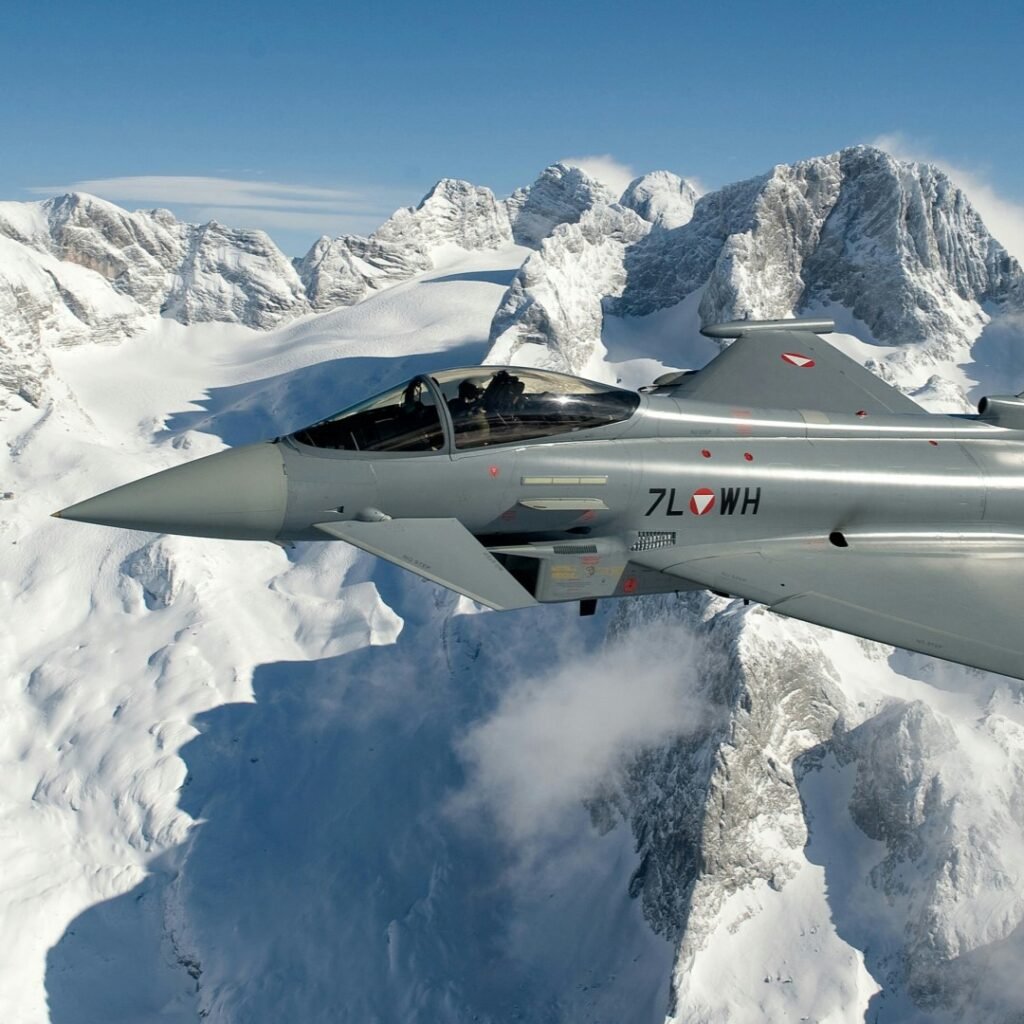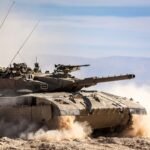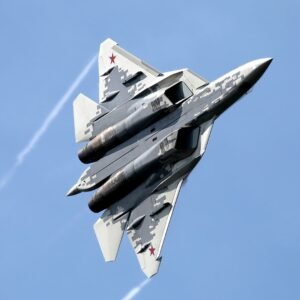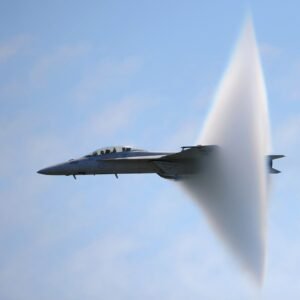I. Origin
The Eurofighter Typhoon Fighter Plane is a multi-role aircraft that was developed by a consortium of European aerospace companies, including BAE Systems, Airbus Defence and Space, and Leonardo. The development of the aircraft began in the 1980s, and it made its first flight in 1994.
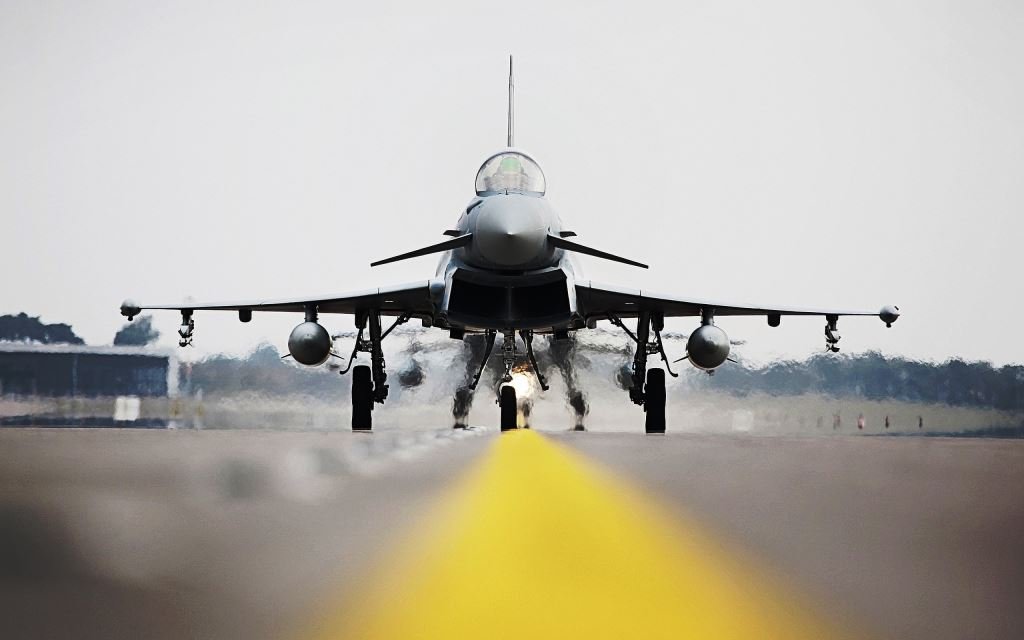
The Eurofighter Typhoon fighter plane was designed to replace a number of existing aircraft in the inventories of the participating countries, including the Tornado, Mirage 2000, and F-4 Phantom. The project was known as the European Fighter Aircraft (EFA) until 1992 when it was renamed the Eurofighter Typhoon.
The Eurofighter Typhoon has been in service with a number of European countries, including the United Kingdom, Germany, Italy, Spain, Austria, and Saudi Arabia. It has seen combat in a number of conflicts, including the Libyan Civil War, the Iraqi Civil War, and the Syrian Civil War.
II. Design and Development of The Eurofighter Typhoon Fighter Plane
The design and development of the Eurofighter Typhoon Fighter Plane began in the 1980s, with the goal of creating a modern, high-performance fighter aircraft to replace a number of existing aircraft in the inventories of European countries. The project was originally called the European Fighter Aircraft (EFA) and was a joint effort between British Aerospace (now BAE Systems), DaimlerChrysler Aerospace (now Airbus Defence and Space), Aeritalia (now Leonardo), and Construcciones Aeronáuticas SA (now Airbus Defence and Space).
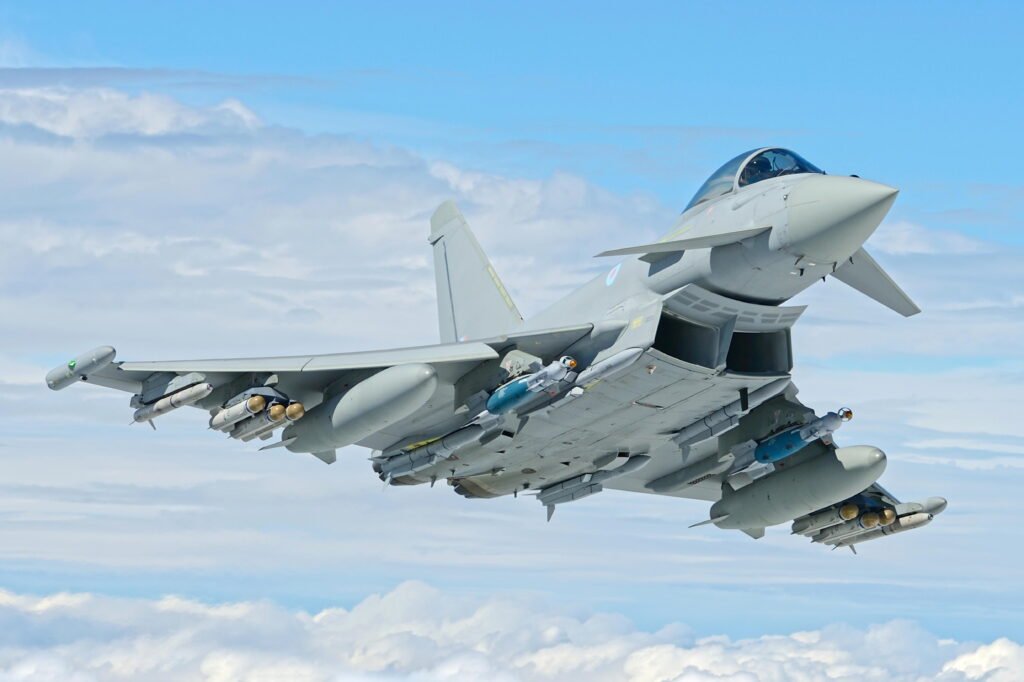
The design of the Typhoon was based on a “canard delta” wing configuration, which gives the aircraft excellent maneuverability and agility in the air. It also features advanced avionics and sensors, including a passive electronically scanned array (PESA) radar, which allows the aircraft to detect and track multiple targets at once.
The development of the Typhoon was a long and complex process, with a number of challenges along the way. One of the biggest challenges was agreeing on the design and specifications of the aircraft among the participating countries. Another challenge was developing the complex software and avionics systems that are necessary to make the aircraft work effectively.
Despite these challenges, the Eurofighter Typhoon Fighter Plane has become one of the most advanced and capable fighter aircraft in the world and is widely regarded as a significant achievement in European aerospace engineering.
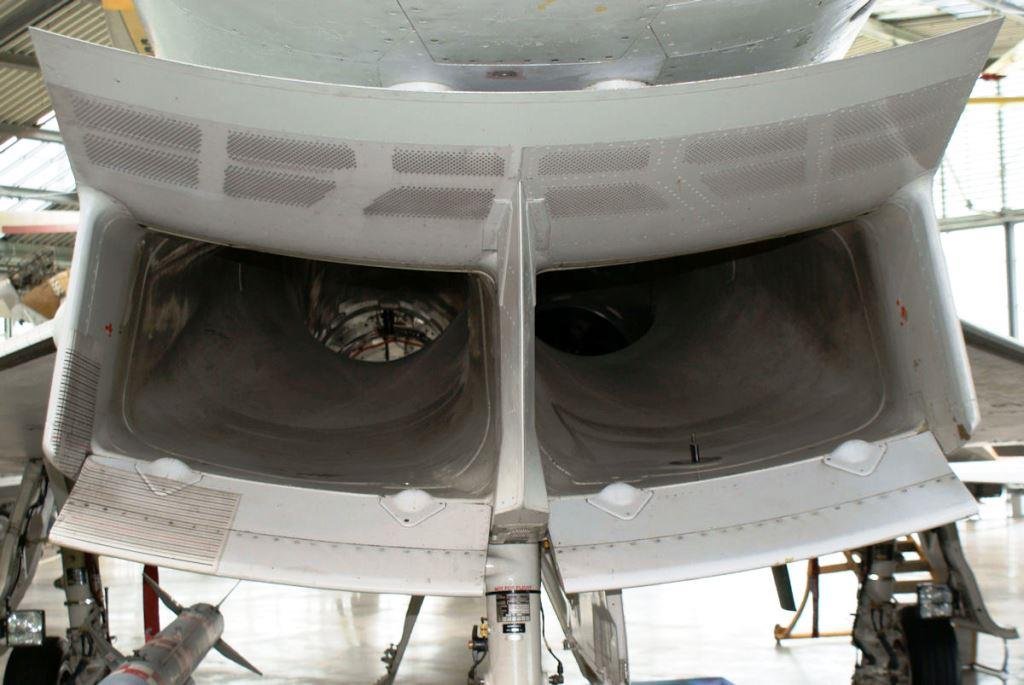
III. General Specifications of Eurofighter Typhoon Fighter Plane
| Specification | Details |
| Crew | 1 or 2 (depending on the variant) |
| Length | 15.96 m (52 ft 4 in) |
| Wingspan | 10.95 m (35 ft 11 in) |
| Height | 5.28 m (17 ft 4 in) |
| Wing area | 51.2 m² (551 sq ft) |
| Empty weight | 11,000 kg (24,250 lb) |
| Loaded weight | 16,000 kg (35,275 lb) |
| Max takeoff weight | 23,500 kg (51,800 lb) |
| Powerplant | 2 × Eurojet EJ200 afterburning turbofans |
| Thrust | 90 kN (20,000 lbf) each engine |
| Maximum speed | Mach 2.0 (2,495 km/h or 1,550 mph) |
| Range | 3,790 km (2,352 mi) |
| Service ceiling | 19,812 m (65,000 ft) |
| Rate of climb | 315 m/s (62,000 ft/min) |
A. Cockpit
The cockpit of the Eurofighter Typhoon Fighter Plane is a highly advanced and modern design, with a wide range of features and capabilities to support the pilot in both air-to-air and air-to-ground missions.
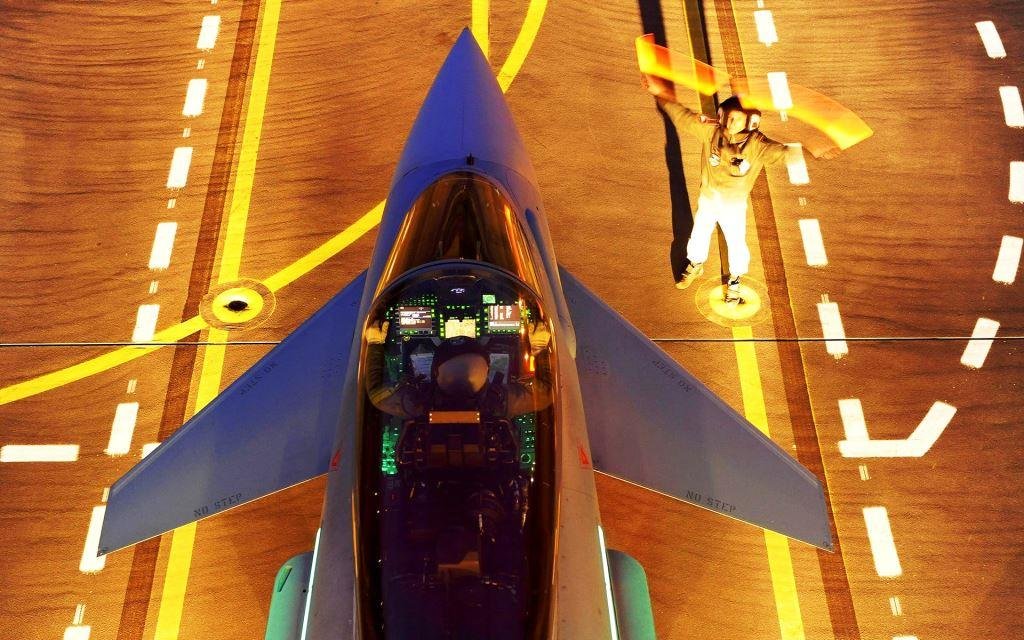
The cockpit is designed to be as ergonomic and comfortable as possible for the pilot, with a spacious and well-lit interior that is optimized for visibility and ease of use. The pilot sits in a Martin-Baker Mk.16A ejection seat, which is capable of safely ejecting the pilot from the aircraft in the event of an emergency.
The cockpit is equipped with a large, color head-up display (HUD) that provides the pilot with essential flight information, such as airspeed, altitude, and navigation data, without the need to look away from the forward view. The cockpit also features a wide-angle, high-resolution multifunction display (MFD) that can display a range of information, including radar data, targeting information, and weapon status.
The pilot controls the aircraft using a side-stick controller, which is positioned on the right side of the cockpit. The side-stick controller is designed to be highly sensitive and responsive, allowing the pilot to make precise and accurate movements with ease.
Other features of the Eurofighter Typhoon cockpit include a hands-on-throttle-and-stick (HOTAS) system, which allows the pilot to control the aircraft’s weapons and systems using buttons and switches located on the throttle and stick, and an advanced communications system, which enables the pilot to communicate with other aircraft and ground-based units using a range of voice and data channels.
B. IRST
IRST stands for Infra-Red Search and Track, which is a passive sensor system used on many modern fighter aircraft, including the Eurofighter Typhoon Fighter Plane. The IRST system operates by detecting the heat signatures emitted by other aircraft and using this information to track and engage targets.
The Eurofighter Typhoon Fighter Plane is equipped with an advanced IRST system, which is integrated into the aircraft’s overall sensor suite. The Typhoon’s IRST system is designed to operate in a wide range of environments, including conditions where other sensors may be limited or ineffective, such as in the presence of electronic countermeasures or stealth technologies.

- Long-range detection: The Typhoon’s IRST system is capable of detecting and tracking targets at ranges of up to 100 km (62 miles), making it a powerful tool for situational awareness and threat detection.
- High-resolution imaging: The Typhoon’s IRST system is capable of providing high-resolution imaging of targets, allowing pilots to identify and track individual aircraft or ground targets with precision.
- Multi-target tracking: The Typhoon’s IRST system is capable of tracking multiple targets simultaneously, allowing the pilot to monitor the activity of multiple aircraft or ground targets at the same time.
C. The Eurofighter Typhoon Fighter Plane:- Engine
The Eurofighter Typhoon Fighter Plane is powered by two Eurojet EJ200 turbofan engines, which are designed to provide the aircraft with high levels of thrust and maneuverability. No. of Key specifications of the Eurojet EJ200 engine:

- Thrust: 90 kN (20,000 lbf) dry, 180 kN (40,000 lbf) with afterburner
- Length: 4.5 meters (14.76 feet)
- Diameter: 1.01 meters (3.31 feet)
- Weight: 1,515 kilograms (3,340 pounds)

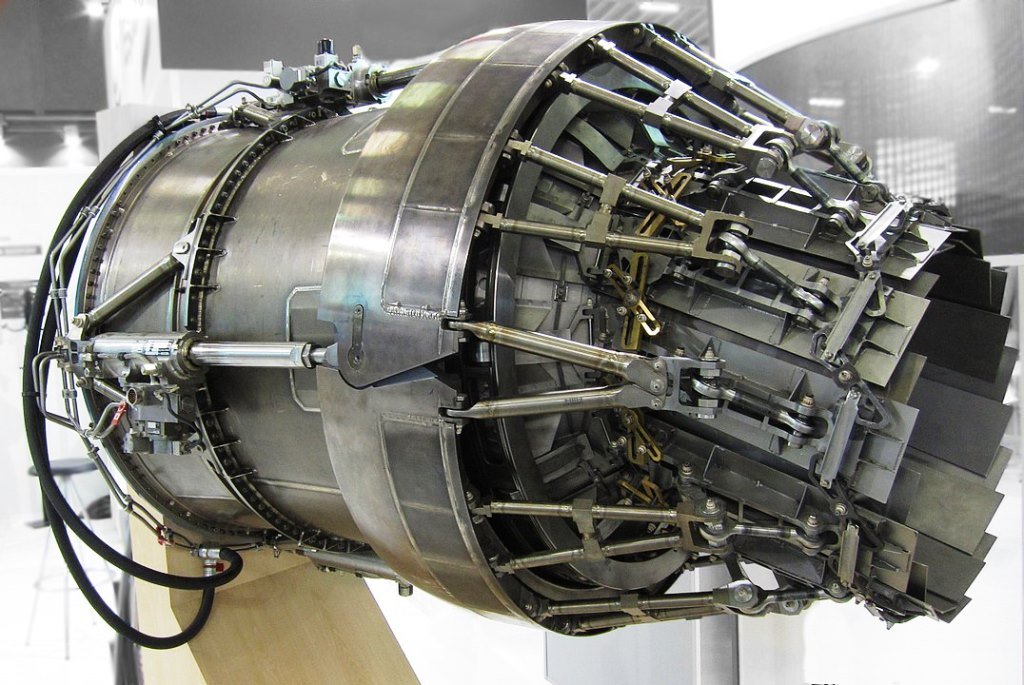
The EJ200 engine is designed to provide the Typhoon with a high thrust-to-weight ratio, enabling the aircraft to perform agile maneuvers and maintain high speeds in combat. The engine also features advanced digital controls and a full-authority digital engine control (FADEC) system, which allows for precise and responsive engine performance.
D. The Eurofighter Typhoon Fighter Plane:- Avionics
The Eurofighter Typhoon Fighter Plane is equipped with advanced avionics and sensors that provide the pilot with a high degree of situational awareness and support mission success.
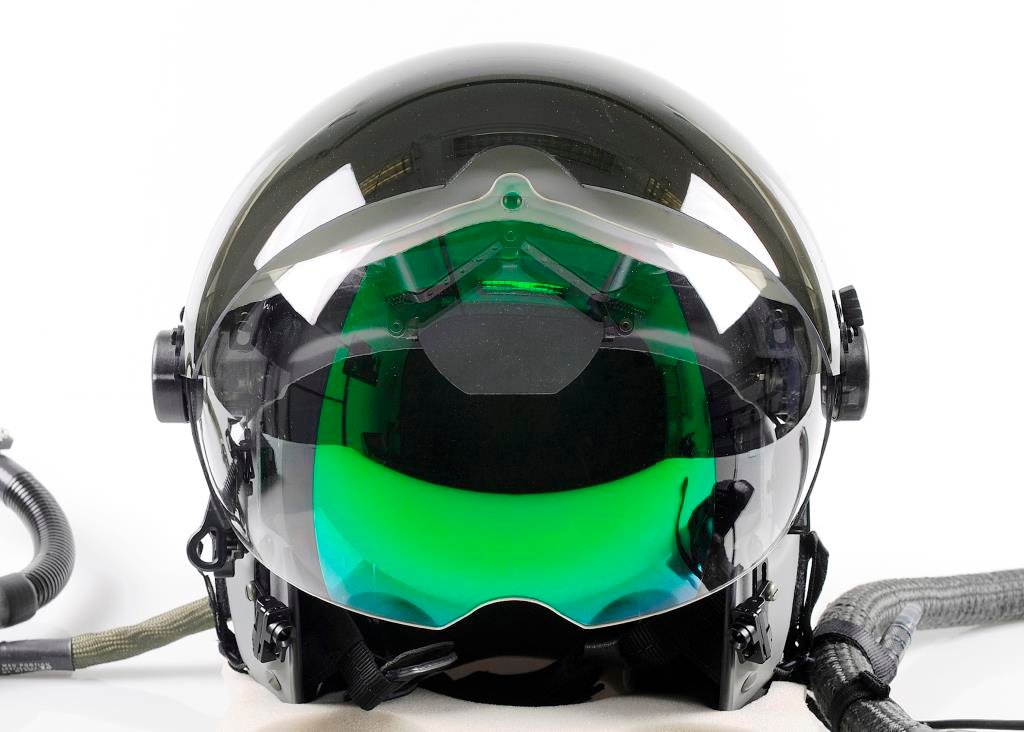
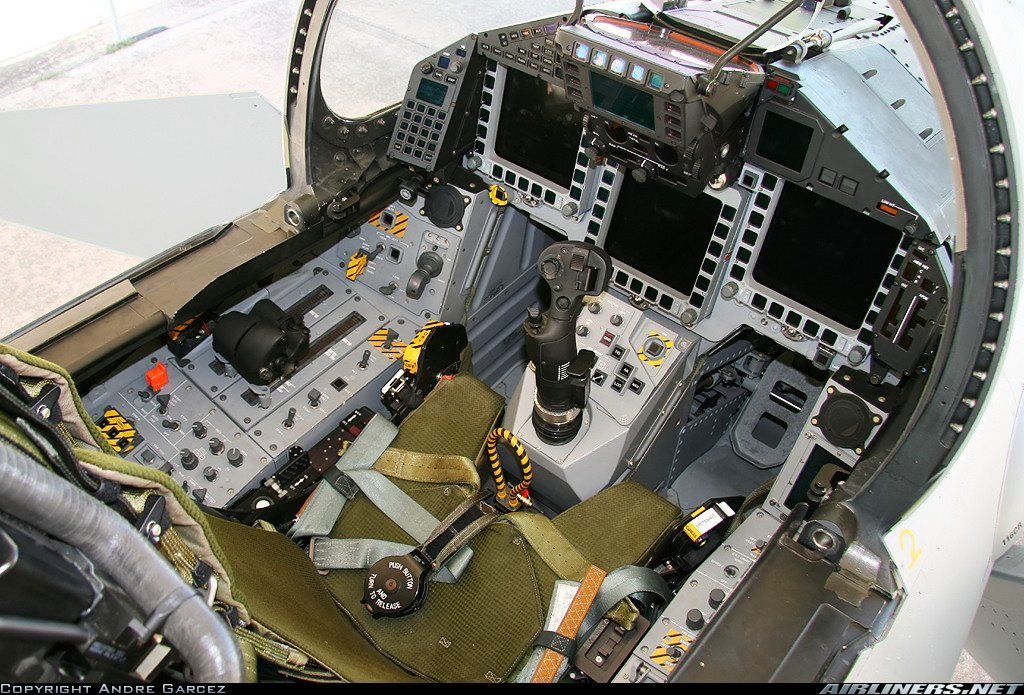
- Captor-M active electronically scanned array (AESA) radar: This radar provides high-resolution target tracking and imaging capabilities, as well as advanced air-to-air and air-to-ground modes for enhanced mission flexibility.
- DASS (Defensive Aids Sub System): The DASS provides the Typhoon with advanced electronic warfare capabilities, including radar warning receivers, missile approach warning sensors, and chaff and flare dispensers.
- Infra-red search and track (IRST) system: This passive sensor allows the Typhoon to detect and track airborne targets using their heat signatures, even in conditions where other sensors may be limited.
- PIRATE (Passive Infra-Red Airborne Tracking Equipment) system: This sensor provides high-resolution imaging capabilities for enhanced target detection and tracking, and can also be used for navigation and terrain mapping.
- Helmet-mounted display (HMD): The HMD provides the pilot with a high-resolution, virtual display of critical flight and mission data, allowing them to maintain situational awareness without looking away from the forward view.
- Advanced mission computers: The Typhoon is equipped with multiple mission computers that allow for rapid data processing and communication between the aircraft’s avionics systems.
- Data links: The Typhoon is equipped with advanced data links that allow it to communicate with other aircraft and ground-based units, as well as to receive targeting information from external sources.

E. Armaments of The Eurofighter Typhoon Fighter Plane
The Eurofighter Typhoon Fighter Plane is equipped with a variety of air-to-air and air-to-ground weapons, allowing it to perform a wide range of missions.
a. Air-To-Air Missiles:
- AIM-120 AMRAAM (Advanced Medium Range Air-to-Air Missile)
- AIM-9 Sidewinder
- IRIS-T (Infrared Imaging System Tail/Thrust Vector-Controlled)
- ASRAAM (Advanced Short-Range Air-to-Air Missile)
- Meteor (Beyond Visual Range Air-to-Air Missile)


b. Air-To-Ground Missiles and Bombs:
- AGM-65 Maverick
- AGM-88 HARM (High-Speed Anti-Radiation Missile)
- Brimstone (Air-to-Ground Missile)
- Storm Shadow (Long-Range Air-Launched Cruise Missile)
- Paveway series of laser-guided bombs
- JDAM (Joint Direct Attack Munition)
c. Other Weapons:
Mauser BK-27 27mm cannon (mounted internally in the aircraft)
IV. Operational History- The Eurofighter Typhoon Fighter Plane
The Eurofighter Typhoon Fighter Plane has been in service with various air forces around the world since the early 2000s.
- The Typhoon entered service with the United Kingdom’s Royal Air Force (RAF) in 2003 and has since become a key component of the RAF’s air defense and strike capabilities.
- The Typhoon has also been used extensively by the German Air Force, which has operated the aircraft since 2004. German Typhoons have been deployed on a number of international missions, including air policing missions in the Baltic region and participation in NATO operations in Libya.
- The Italian Air Force has also been a major operator of the Typhoon, having acquired the aircraft in 2003. Italian Typhoons have been used in a variety of roles, including air defense, strike missions, and support for ground operations.
- Other countries that have acquired the Typhoon include Spain, Austria, Saudi Arabia, Oman, and Kuwait. In addition to its role as a fighter and ground attack aircraft, the Typhoon has also been used for air-to-air refueling and as a platform for various airborne sensors and systems.
- The Typhoon has seen combat in a number of conflicts, including operations in Libya in 2011, where Typhoons from the UK, Italy, and other countries participated in a NATO-led air campaign. Typhoons have also been deployed in support of anti-ISIS operations in Iraq and Syria.

V. Prototypes of The Eurofighter Typhoon Fighter Plane
The Eurofighter Typhoon program began in the 1980s as a joint effort between Germany, Italy, the United Kingdom, and Spain. The development of the aircraft involved a number of prototype and pre-production models, as well as extensive testing and evaluation.
- EAP (Experimental Aircraft Programme): The EAP was a technology demonstrator aircraft developed in the late 1980s and early 1990s to validate the key technologies and design concepts that would be used in the Eurofighter Typhoon. The EAP was first flown in 1986 and completed its flight testing program in 1991.
- DA1 (Development Aircraft 1): The DA1 was the first full-scale development model of the Eurofighter Typhoon, and was used for flight testing and evaluation of the aircraft’s performance and handling characteristics. The DA1 made its first flight in 1994 and was used for extensive flight testing and development work throughout the 1990s.
- DA2 and DA3: The DA2 and DA3 were subsequent development models of the Eurofighter Typhoon, and were used for further flight testing and evaluation of the aircraft’s systems and capabilities.
- IPA (Instrumented Production Aircraft): The IPA was a pre-production model of the Eurofighter Typhoon that was used for testing and evaluation of the aircraft’s systems and performance. The IPA was produced in small numbers and used for testing and evaluation in the late 1990s and early 2000s.
- Eurofighter Typhoon T1: The Typhoon T1 was the first production model of the aircraft, and was delivered to the UK’s Royal Air Force in 2003. The T1 was used for operational testing and evaluation, as well as for pilot training and familiarization.

VI. Variants of Eurofighter Typhoon Fighter Plane
The Eurofighter Typhoon Fighter Plane has been developed in a number of variants over the years, each tailored to the specific requirements of the air forces that operate the aircraft.
- Typhoon T1: The T1 was the first production model of the Eurofighter Typhoon, and was delivered to the UK’s Royal Air Force (RAF) in 2003. The T1 was used for operational testing and evaluation, as well as for pilot training and familiarization.
- Typhoon F2: The F2 variant was developed specifically for the RAF, and featured a number of upgrades over the T1 model, including improved avionics and weapons systems.
- Typhoon FGR4: The FGR4 is the current variant of the Eurofighter Typhoon operated by the RAF. It includes a number of improvements over previous models, including upgraded avionics, weapons systems, and engine performance.
- Typhoon T3A: The T3A is a variant of the Typhoon operated by the RAF for advanced pilot training. It features a two-seat cockpit and advanced training systems.
- Typhoon Tranche 1: This was the first production model of the Eurofighter Typhoon acquired by the German Air Force, and featured a number of German-specific avionics and systems.
- Typhoon Tranche 2: The Tranche 2 variant included a number of upgrades over the Tranche 1 model, including improved avionics and software, as well as increased weapon-carrying capacity.
- Typhoon Tranche 3A: The Tranche 3A variant includes additional upgrades to the avionics and systems, as well as improved engine performance and increased weapon-carrying capacity.
- Typhoon Tranche 3B: The Tranche 3B variant includes further upgrades to the avionics and systems, as well as enhanced stealth features and other improvements.
- Typhoon T2: The T2 is a two-seat variant of the Eurofighter Typhoon operated by the Spanish Air Force, and is used for advanced pilot training and operational missions.
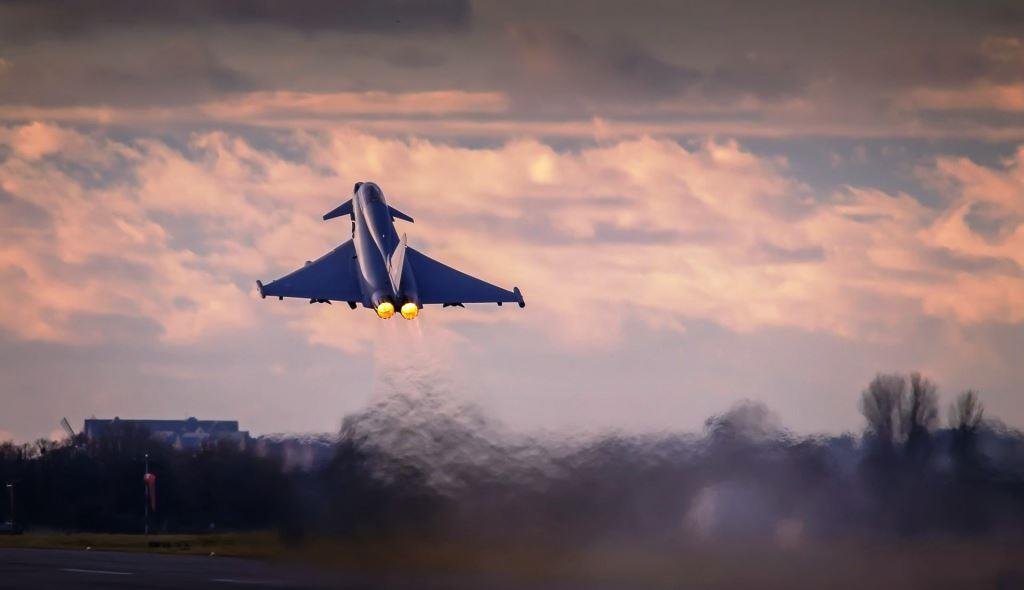
VI. Country Operators
The Eurofighter Typhoon Fighter Plane is operated by several countries around the world.
- Austria: The Austrian Air Force operates a fleet of 15 Eurofighter Typhoons.
- Germany: The German Air Force operates a fleet of 143 Eurofighter Typhoons.
- Italy: The Italian Air Force and Navy operate a total of 96 Eurofighter Typhoons.
- Kuwait: The Kuwait Air Force has ordered 28 Eurofighter Typhoons, with deliveries expected to begin in 2020.
- Oman: The Royal Air Force of Oman operates a fleet of 12 Eurofighter Typhoons.
- Qatar: The Qatar Emiri Air Force has ordered 24 Eurofighter Typhoons, with deliveries expected to begin in 2022.
- Saudi Arabia: The Royal Saudi Air Force operates a fleet of 72 Eurofighter Typhoons.
- Spain: The Spanish Air Force operates a fleet of 73 Eurofighter Typhoons.
- United Kingdom: The Royal Air Force operates a fleet of 118 Eurofighter Typhoons.
- United Arab Emirates: The United Arab Emirates Air Force has ordered 60 Eurofighter Typhoons, but the deal has been put on hold.
- Morocco: The Royal Moroccan Air Force has ordered 24 Eurofighter Typhoons, with deliveries expected to begin in 2024.
- Bahrain: The Royal Bahraini Air Force has ordered 12 Eurofighter Typhoons, with deliveries expected to begin in 2023.
- Indonesia: The Indonesian Air Force has expressed interest in acquiring the Eurofighter Typhoon, but no orders have been placed yet.
- Japan: Japan has expressed interest in the Eurofighter Typhoon as a potential replacement for its aging fleet of F-4 Phantom II aircraft, but no orders have been placed yet.
Read More:-Chengdu J20 vs Dassault Rafale Comparison and McDonnell Douglas F15 Eagle.

